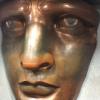-
Recently Browsing
- No registered users viewing this page.
-
Topics
-
Posts
-
Interesting interpretation of "traditional". I would say that Loctite is definitely the up-to-date and appropriate stuff to use, however, it is a relatively modern solution. Before the advent of such esoteric solutions I believe that the "traditional" thread locker of choice may well have been a sugar solution. Once applied the water would evaporate and the sugar would crystalise, locking the threads tight.
-
@steve1811uk close but no cigar 🙂 I don't smoke anyway. I checked in my stock of parts and that's the closest I got to your dimensions. Good luck in your search. @RichardHarris123 I have an accumulation of all sorts of odds and ends that I acquired as a result of buying up the tail ends of old watchmakers estates. Usually after all of the great stuff has been stripped out, which means that the sweepings off of the workshop floor can be had for peanuts, but if you have the patience, can often be found to contain gold (both literally and figuratively 🙂 ). These came to me through on of those purchases. I doubt that I will personally be able to make use of even 10% of my accumulated stock, but having it, and knowing what I have, means that I can at least pass bits on to those who can use it whenever possible.
-
Hi and thank-you for your suggestions, as per Mark's instructions I checked my browser "Safari" and spell check and grammar was not ticked. So all sorted. Thanks CJ
-
By RichardHarris123 · Posted
As an alternative, clear nail Polish, the advantage is you can have a manicure at the same time. -
I use Grammarly. It works really well and If English is not your first language, you will also receive help with formulations. There is a free version that covers most of my needs. It installs as a plug-in and works with all browsers and word processors.
-







Recommended Posts